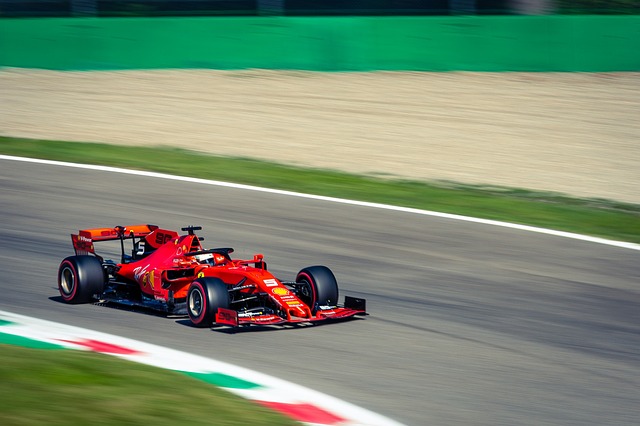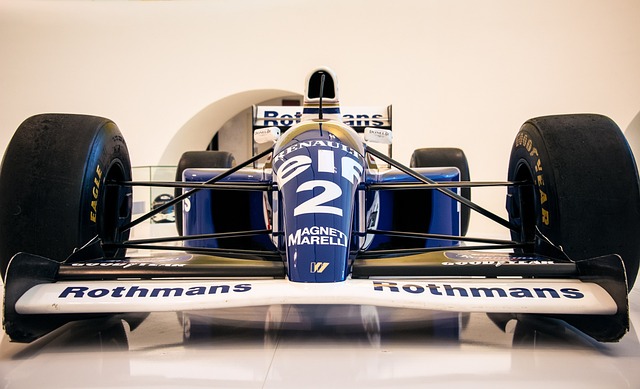
Image by Lee Chandler from Pixabay
Plenty of things we enjoy have a downside that we do our best to ignore. Crisps taste fabulous but can pile on the pounds. Boozy parties are fun but impact our health. Airbnb is is great for holidaymakers but often causes problems for residents.
And then there’s motorsport. Raucous, exhilarating, competitive… and with an environmental footprint like Robert Wadlow’s size-36 shoes.
Now, for some fans, any mention of the environment or green issues has them furiously typing in comments sections on motorsport blogs , or muttering about EV battery fires. But others want to face up to the issue and want the sport they love to change.
So, from a planetary health perspective, what exactly is the problem with motorsport?
Motorsport and the environment – it’s not about the fuel
If you were asked about the environmental impact of motorsport – let’s say F1 racing – the first thing that might spring to mind might be burning through all that fuel. However, as Apexbite point out:
Formula 1 cars can use a maximum of 110 kilograms of fuel per race, which is equivalent to around 30 gallons of fuel. However, they don’t always fill the car with that much fuel. This is because the more fuel a car carries, the heavier it becomes, which affects its performance.
Furthermore, in an effort to clean up its act, F1 cars are starting to use more sustainable fuels.
In fact, the bigger environmental problem associated with motorsport, by far, is the use of tyres.
They get through how many tyres?
Formula One tyres are technological marvels, gluing some of the world’s most advanced cars to the track to achieve incredible acceleration, braking and cornering.
As you might expect, F1 tyres don’t last too long. Precisely how many isn’t easy to figure out, because the regulations surrounding tyre use are complex. Some sources suggest 13 sets for a race weekend, though from 2022 that’s been dropped to 11, and others quoting 20 sets per driver per weekend. No doubt motorsport fans can put us straight on which one is correct, but the overall point is that F1 cars get through a huge number of tyres.
Pirelli supplies approximately 1800 tyres per racing weekend. The total number of tyres supplied by Pirelli to the FIA per F1 season comes close to 40,000 tyres.
How Many Tyres Can F1 Teams Use? | F1 Tyres Explained (f1chronicle.com)
Why motorsport tyres are bad news

Image by Gianfranco De Bei from Pixabay
There are three main ways that motorsport tyres are environmentally damaging: We’ve run articles before on the nasties released by tyre burnouts – mainly looking at the possible health impacts – and vaporising F1 tyre rubber isn’t great for the local environment. However, the bigger environmental impact is from tyre manufacture and disposal. Consider that:
- Oil use in their manufacture. Even a bog-standard car tyre uses about seven US gallons of oil in its manufacture (five gallons to produce synthetic rubber and another two to power the process).
- Natural rubber use in their manufacture. Replacement of oil-derived synthetic rubber sounds great, but rubber plantations are a significant source of deforestation.
- Particulates released by tyre degradation. Tiny particles of tyre get washed into the ocean, where they contribute to microplastic pollution.
Now obviously, all three of these added together are a drop in the bucket compared to tyre pollution from regular sources. However, there’s also no avoiding the fact that motorsport does add more than its fair share to pollution problems.
The good news is that motorsport is starting to clean up its act.
Tinges of green
In recent years, motorsport organisations and tyre companies have been thinking beyond entertainment and trying to limit their environmental footprint. For a detailed take on this, we recommend this excellent article on racefans.net, but in brief, this includes:
- Moving towards alternative sources of natural rubber. Some tyre companies are starting to use the shrub guayule rather than rubber trees.
- Using sustainably sourced rubber. Pirelli, for example, produces tyres produced in responsibly managed plantations certified by the Forest Stewardship Council.
- Limiting the number of tyres. Formula E racing drastically reduces the number of tyres used, and the tyres used are designed to degrade more slowly.
OK, motorsport is never going to be the most planet-friendly activity, but these are encouraging signs that those involved are moving in the right direction. There are more fans than you might think who want to enjoy the sport AND limit environmental damage, and they’re helping to encourage the sport to move faster and further.
The BK Tyres blog carries news, views and information on tyres and related subjects. BK Tyres supplies and fits tyres throughout South Oxfordshire, including the communities of Abingdon, Didcot and Henley on Thames. As an independent, family run mobile provider, we provide exceptional levels of service and affordable prices. Contact us today.
